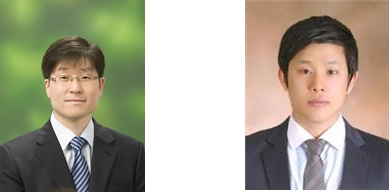Media Center
A multimedia mosaic of moments at GIST
GIST Excellence
[Press Release] A facile method for growing VO2 wires with controlled diameters developed
- 엘리스 리
- REG_DATE : 2016.06.27
- HIT : 999
A facile method for growing VO2 wires with controlled diameters developed

A research team led by GIST Professor Bong-Joong Kim has developed a facile method for growing VO2 wires with controlled diameters. The abstract from their paper entitled "Real-Time Structural and Electrical Characterization of Metal–Insulator Transition in Strain-Modulated Single-Phase VO2 Wires with Controlled Diameters," which was published in Nano Letters on June 2, 2016, reads as follows:
"Single-crystal VO2 wires have gained tremendous popularity for enabling the study of the fundamental properties of the metal–insulator transition (MIT); however, it remains tricky to precisely measure the intrinsic properties of the transitional phases with controlled wire-growth properties, such as diameter. Here, we report a facile method for growing VO2 wires with controlled diameters by separating the formation of the liquidus V2O5 seed droplets from the evolution of the VO2 wire using oxygen gas. The kinetic analyses suggest that the growth proceeds via the VS (vapor–solid) mechanism, whereas the droplet determines the size and the location of the wire. In situ Raman spectroscopy combined with analyses of the electrical properties of an individual wire allowed us to construct a diameter–temperature phase diagram from three initial phases (i.e., M1, T, and M2), which were created by misfit stress from the substrate and were preserved at room temperature. We also correlated this relation with resistivity–diameter and activation energy–diameter relations supported by theoretical modeling. These carefully designed approaches enabled us to elucidate the details of the phase transitions over a wide range of stress conditions, offering an opportunity to quantify relevant thermodynamic and electronic parameters (including resistivities, activation energies, and energy barriers of the key insulating phases) and to explain the intriguing behaviors of the T phase during the MIT."